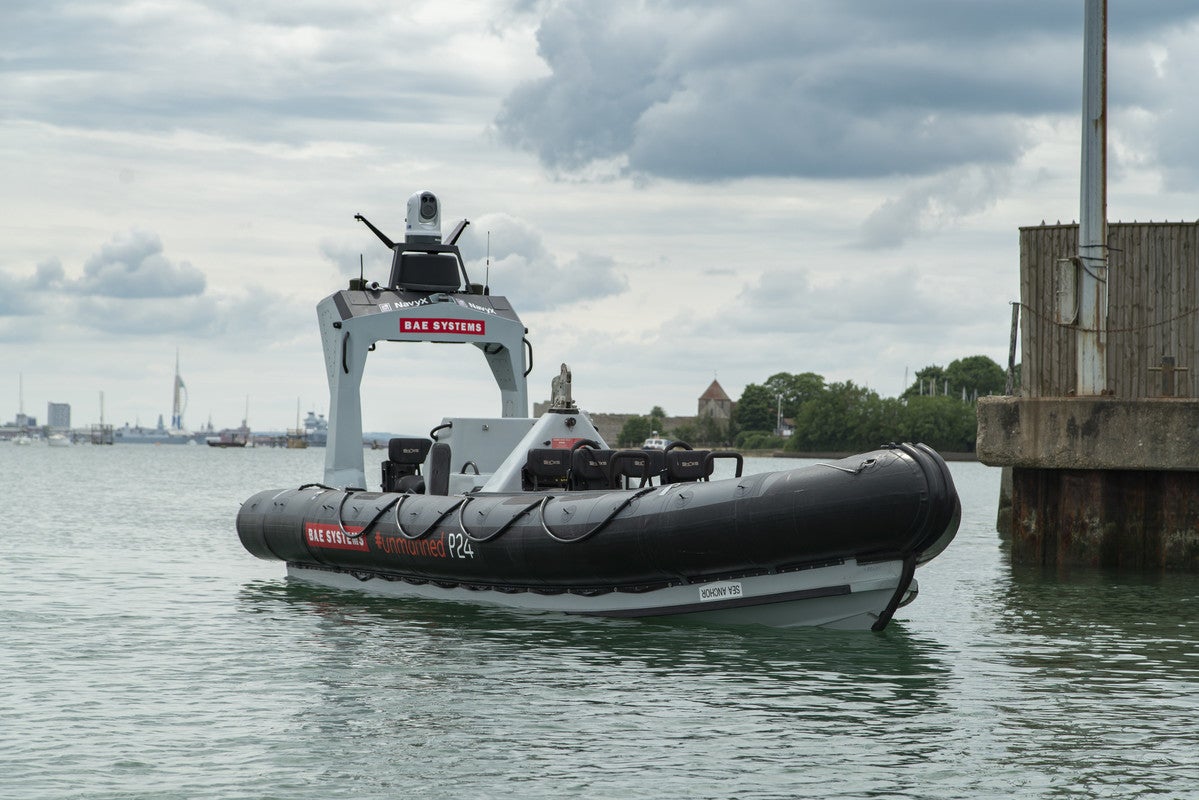
The navy said it is investing more than £3m in the crewless Pacific 24 boat alongside other autonomous craft that can support the fleet and take on dangerous missions without putting personnel in harm’s way.
The Autonomous Pacific 24 can execute missions by itself while being run from a warship where personnel can control the boat’s onboard weapons systems. The autonomous boat is capable of conducting anti-piracy operations, border control, persistent intelligence gathering, maritime security and force protection missions.

Discover B2B Marketing That Performs
Combine business intelligence and editorial excellence to reach engaged professionals across 36 leading media platforms.
The Pacific 24 is already used by the bulk of the Royal Navy surface fleet, with the navy calling the boat the ‘backbone of sea boat operations’. The current manned Pacific 24 vessels are fundamental to navy operations including search and rescue and board-and-search missions.
Commenting on the trials, Defence Minister Jeremy Quinn said: “Commencing the trials of the crewless Pacific 24 boat is an important stepping stone in the Royal Navy’s development of its autonomous capability to ensure our fleet remains at the forefront of military innovation and technology, ready to meet the evolving threats of modern warfare.”
Development of the crewless Pacific 24 is being sponsored by NavyX, the Royal Navy’s Autonomy and Lethality which is designed to rapidly test and develop new and emerging technologies.
At last year’s DSEI, the vessel was on show on the water outside the ExCel conference centre where it was being operated from the Type 23 Frigate HMS Argyll. Other autonomous vessels showcased at the event included one from the UK’s Defence Science and Technology Laboratory (Dstl).

US Tariffs are shifting - will you react or anticipate?
Don’t let policy changes catch you off guard. Stay proactive with real-time data and expert analysis.
By GlobalData Image: BAE Systems.
Image: BAE Systems.
“Ensures the navy remains at the forefront of technological improvement”
The autonomous boat uses the same propulsion system as its manned counterpart but includes a new control system and sensors that allow the vessel to operate autonomously. Personnel can give the vessel and generic tasking and the vessel can then decide how to complete the mission.
The vessel will begin trials with a Royal Navy warship later this year, pending the success of these trials the Navy will then decide whether to invest in a fleet of autonomous vessels or acquire a limited number for specific tasking.
Royal Navy Lieutenant Commander Rob Manson from the NavyX team said: “The autonomous Pacific 24 is not just a step-change for the Royal Navy in unmanned operations, it also ensures the navy remains at the forefront of technological improvement and innovation,”
Manson added: “While initial tasks are likely to be familiar to those who already operate a Pacific 24, the autonomous nature of this craft adds huge capability and flexibility.
“Additionally, this capability can be constantly improved, allowing continuous updates and capability upgrades, resulting in regular additions to the toolbox of operational planners.”
Trials with the autonomous vessel start this month; later in the year, the craft will be integrated with a ‘front-line’ warships combat and navigation systems for further trials.
BAE Systems products and training services director Brooke Hoskins said: “It’s fantastic to see the Royal Navy’s first autonomous Pacific 24 enter the water.
“This milestone has been a goal since we first demonstrated the unmanned capabilities of our Pacific boats to them last year.
“It is a key step in supporting NavyX, turning what was originally an innovative research and development experiment into a fielded capability for the Royal Navy.
“We are proud to support the Royal Navy’s autonomous requirements, which includes increasing its operational effectiveness whilst reducing the burden on, or threat to, its sailors.”



